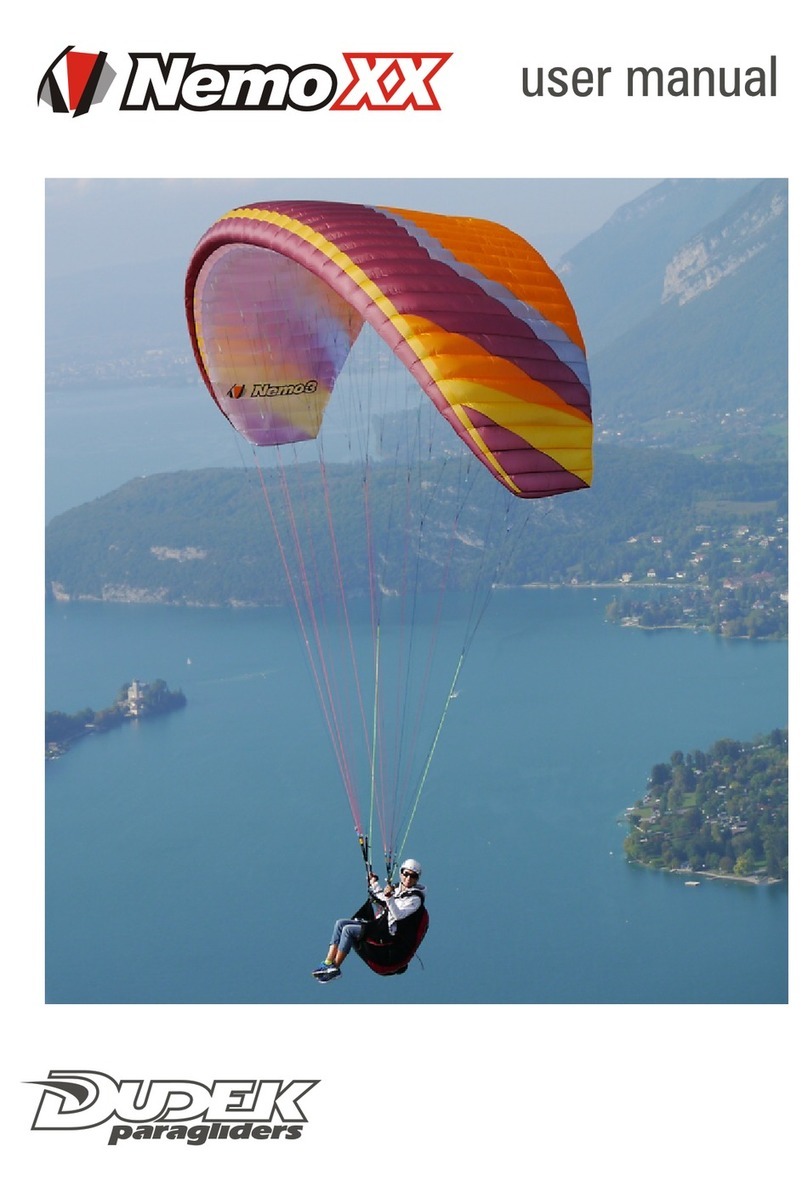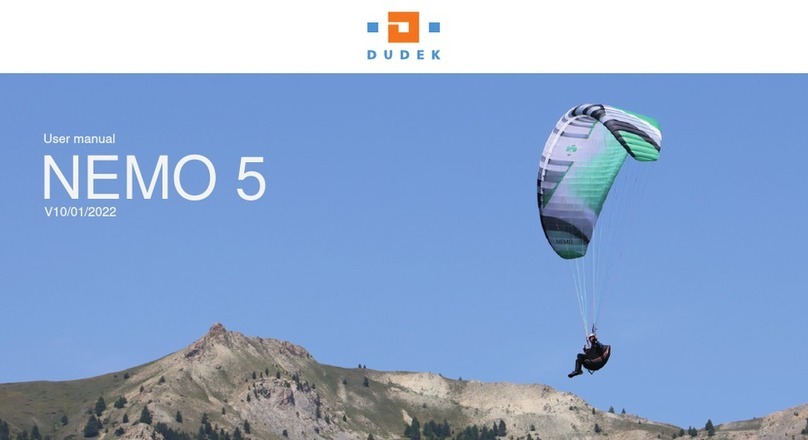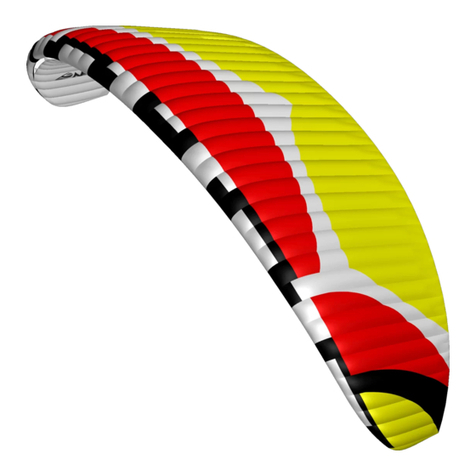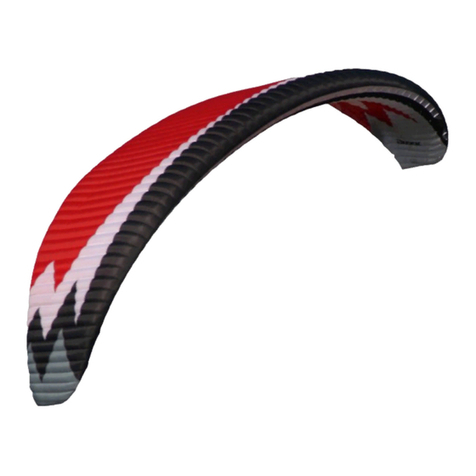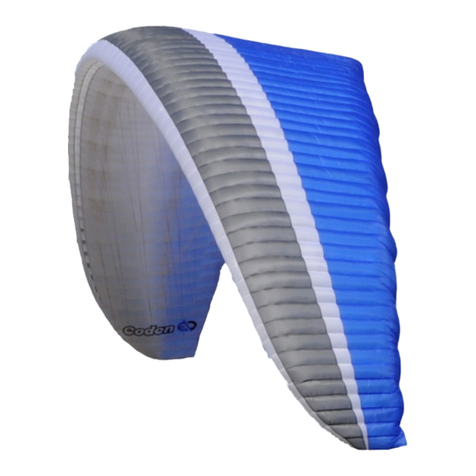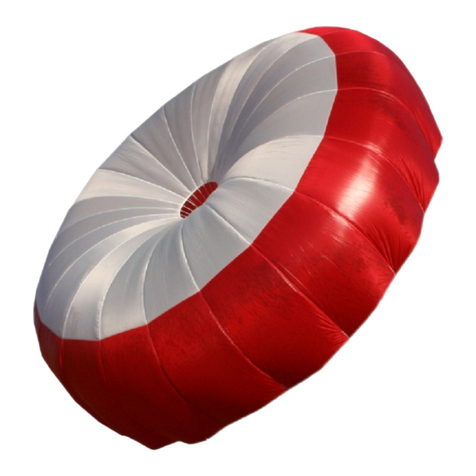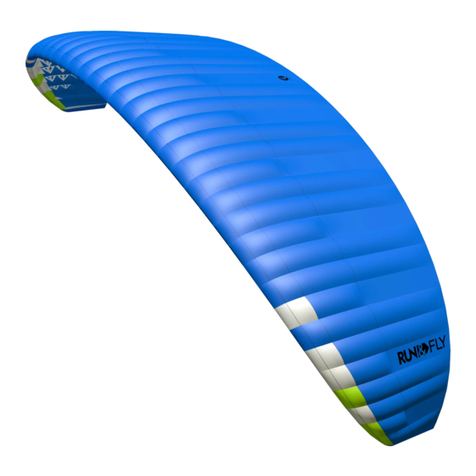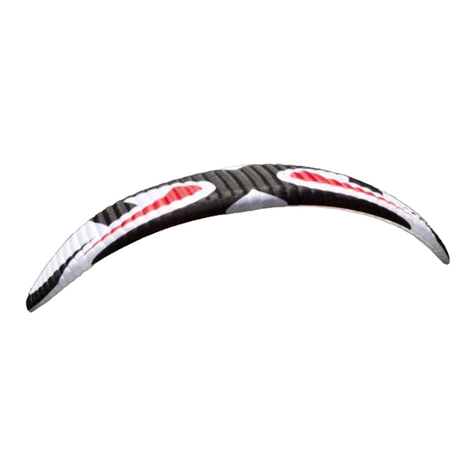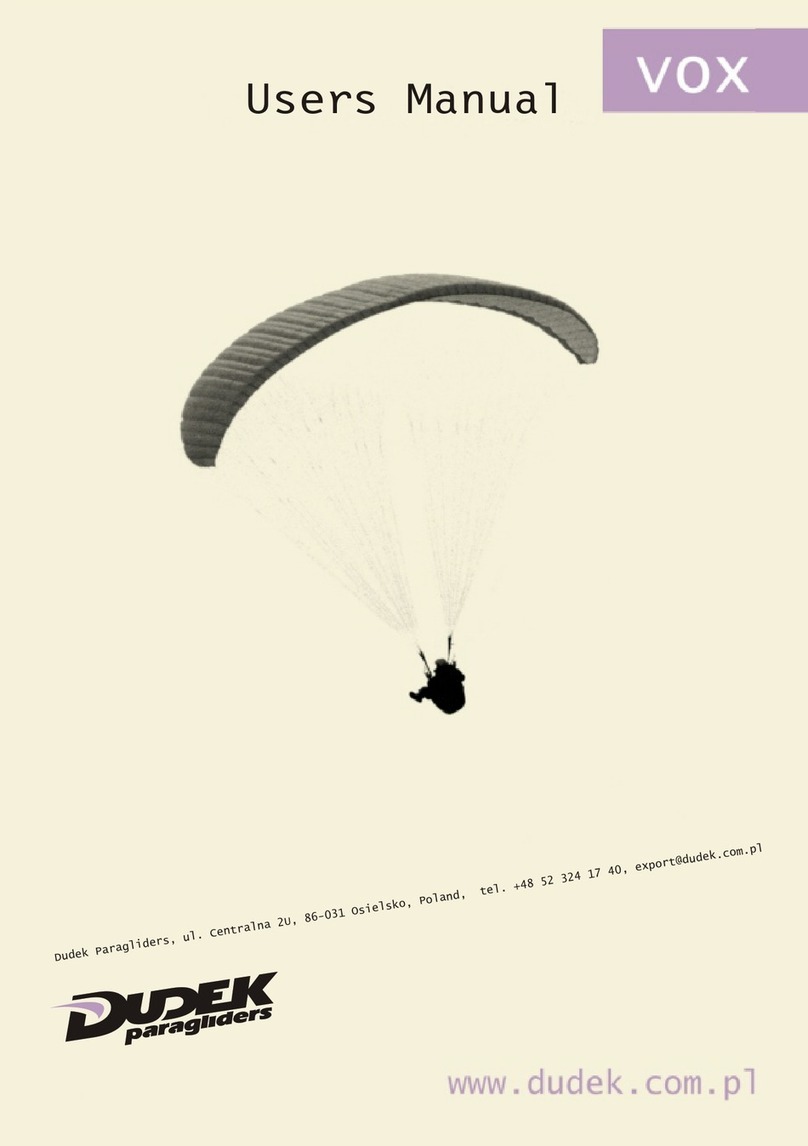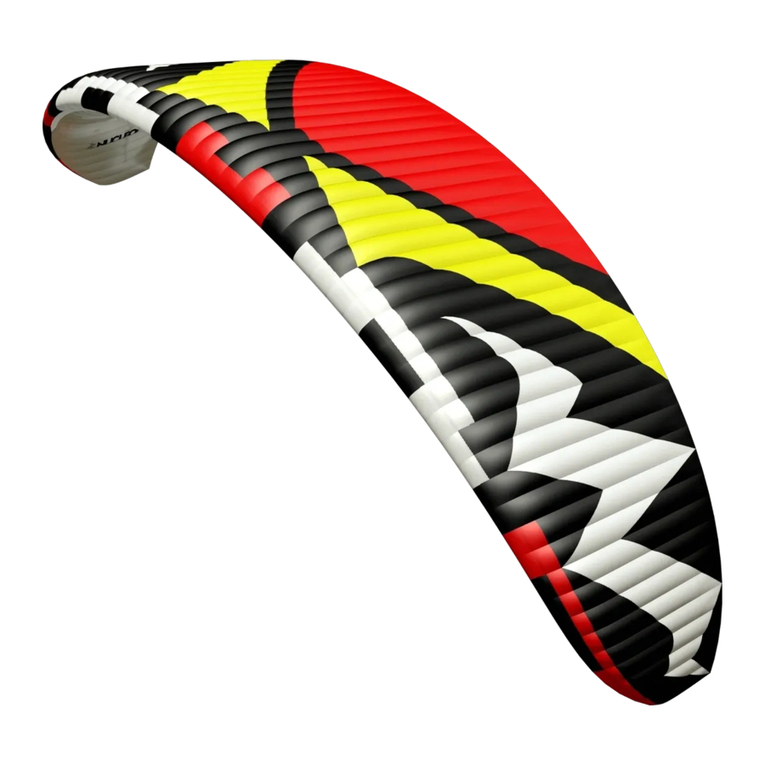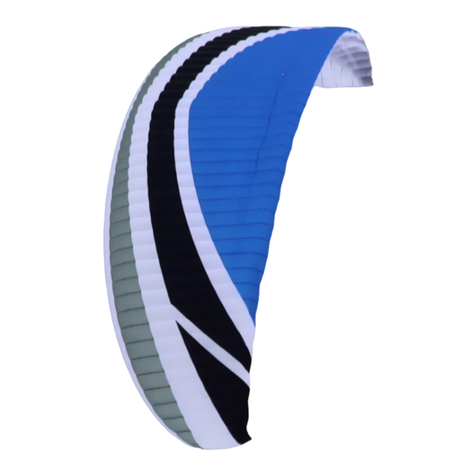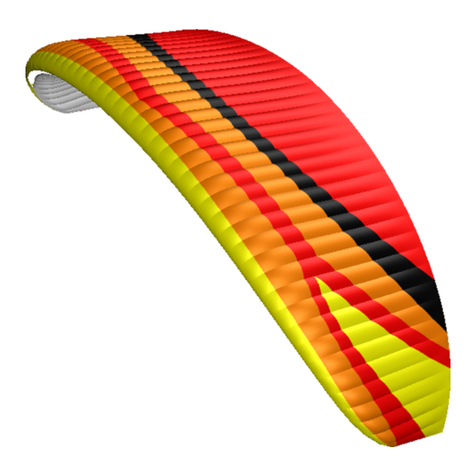NOTE!
Please read this manual carefully before your first flight
Very important!
Before use it is vital to check in which configuration the steering lines and pulleys
are currently set (lower or upper hangpoints) and adjust them to your preferences if
necessary.
The risers have three points to fix the pulleys on – lower, middle and upper one
(see risers on page 11). On each main steering line there are points marked,
to fix the steering handle corresponding to the middle position of the pulley. Position of
the handles should be adjusted according to your pulley setting.
Steering lines must not not push down the trailing edge when not operated – this must
be observed in all possible configurations of trimmers and speed-system. Steering lines
must have a couple of centimeters play before they engage affect the canopy (see
section 3.1 on the proper adjustment). For sake of safety it is always recommended to
set the brakes rather too loose than too tight. Make sure they are set symmetrically, too.
Ill-adjusted steering lines may cause you to misinterpret the canopy’s
behaviour in flight, and may cause dangerous collapses in accelerated flight
when set too short.
Speed system of these risers is by default integrated with the Power Attack system.
During numerous tests it turned out that in case of certain slalom tasks it is better to
restrain the trimmer a bit, so that it won't become totally released when acting jointly
with speed. Such settings make it possible to use the main brakes for steering in
accelerated flight, without collapsing tips.
Correct operaiton of the Power Attack requires releasing the trimmers beforehand by at
least 6 cm and not more than 9 cm.
Using the speed system combined with Power Attack results in big surge of the sink.
This can surprise an unexperienced pilot, causing dangerous situation when close to
the ground.
If you intend to operate the trims independently of the Power Attack system, you have
to disengage the hooks joining the PA and the trimmers.
DO NOT USE THE SPEED SYSTEM WITH CLOSED TRIMMERS OR THE POWER
ATTACK SYSTEM BLOCKED! SUCH ACTION MAY CAUSE VIOLENT COLLAPSES!!
CORRECT SPEED SYSTEM OPERATION REQUIRES
RELEASING TRIMMERS BY AT LEAST 6 CM!
When flying at full speed (trimmers opened / trimmers opened and speedbar
pushed), in rough air, it is highly recommended to steer the paraglider using alternative
steering methods like TCL ( (Tip Control line) and conected TST toggle .
With increasing speed an effect of „inverting” the profile when trailing edge is being
pulled down emerges. That effect can cause dynamic collapses, especially at full
speed.
The safest way to change your course at high speeds is to use the TST and TCL lines,
or (in the order of safety) the outer lines of the 2D steering system. Any steering inputs
should be smooth and easy, without sharp and/or deep movements. Such actions can
dynamically change pressure distribution over the airfoil, leading to collapses.
These warnings affect every paraglider and the Snake XX is no exception!
